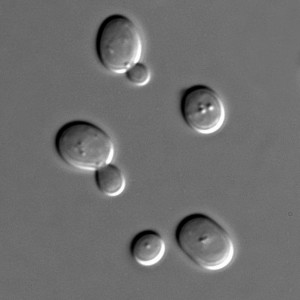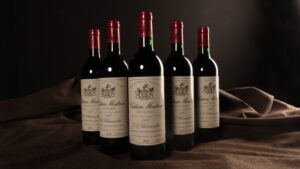A recent study conducted by four researchers from Auckland University (NZ) demonstrates the evidence that regional microbial signature impacts the aromatics of a wine. A scientific approach that confirms a common understanding of the correlation between yeasts and terroir.
What is a yeast?
A yeast is a microscopic fungus consisting of single cells that enable wine to ferment. Yeasts are commonly used in bakery and have the function of “lifting” the bread. Saccharomyce cerevisiae is the name given to the yeast responsible for the alcoholic fermentation in grape juice.
What is the role of yeasts in vinification?
Yeasts are essential to the fermentation of grape juice thereby producing carbon dioxide, alcohol (ethanol), glycerol (giving the smoothness of the wine), succinic acid, acetic acid and aromatic compounds (esters, which are found in young wines) and of course heat, hence the need to regulate the temperature of the tanks. This process is called alcoholic fermentation and can last from two to three weeks to a few months for certain wines. The alcoholic fermentation ends when yeast have transformed all the sugar into alcohol or that the alcohol level is high enough to kill any remaining yeast.
Regarding yeasts there are three different approaches, depending on wineries and winemakers:
- Producers adding yeast from other vines, grown in laboratory and bought according to their aromatic effects on wine. This kind of yeast is often used in wines to be consumed young. Those are the yeast commonly associated with tastes of English sweet in rosé wines or this banana flavour we find in Beaujolais nouveaux…
- Producers cultivating indigenous yeasts then grown in the laboratory. The producer finds a dominant yeast in his vineyard and cultivates it before adding it during fermentation. This system enables a remarkable stability at the time of fermentation respecting the terroir while enabling large volumes of production.
- Producers not adding any yeast during fermentation. In most cases producers taking this approach are organic, natural or biodynamic producers. Not adding any yeast is the purest way for the terroir to express itself fully. This system however has the drawback of being more unstable and to potentially have different yeasts active from a tank to the other. This therefore requires great attention and sometimes a little luck.
What does the study prove?
The study proves that the yeasts are specific to each terroir, parcel and even plots and that they greatly influence the taste of wine. That is to say, yeast, an integral part of the microbiological life of the vine, are inseparable from the concept of terroir and consistently influence the aromas of a wine. Nothing really new so far, but this common thought had never been really supported by any rigorous scientific study before this one.
The researchers conducted a number of chemical analyses in different regions of New Zealand, proving a correlation between the microbial signature of each region and the characteristics of each wine.

Graph 1: The below graph, an analysis of 105 different genotypes of fermentations, clearly showing that each region is defined by a distinct identity. The ellipses thus formed show their own characteristics and the difference of terroir at the wine fermentation stage.
 Graph 2: This study perfectly demonstrates the link between aromas, yeast and terroir. Yet this only works for winemakers who take a real care for their vines and truly seek to develop their terroir. Indeed, those who don’t follow this approach in the vineyard, won’t see the real interest of working without yeast during the vinification.
Graph 2: This study perfectly demonstrates the link between aromas, yeast and terroir. Yet this only works for winemakers who take a real care for their vines and truly seek to develop their terroir. Indeed, those who don’t follow this approach in the vineyard, won’t see the real interest of working without yeast during the vinification.
See the full study by following this link
Knight et al., “Regional microbial signatures positively correlate with differential wine phenotypes: evidence for a microbial aspect to terroir,”Scientific Reports, 5:14233, doi:10.1038/srep14233, 2015.
To read further on iDealwine Le Blog:
- Sulphure in Wine: is it good or bad?
- Evolution of wine since 1985
- This year’s top 50 wines over €1,000
Visit iDealwine.com




